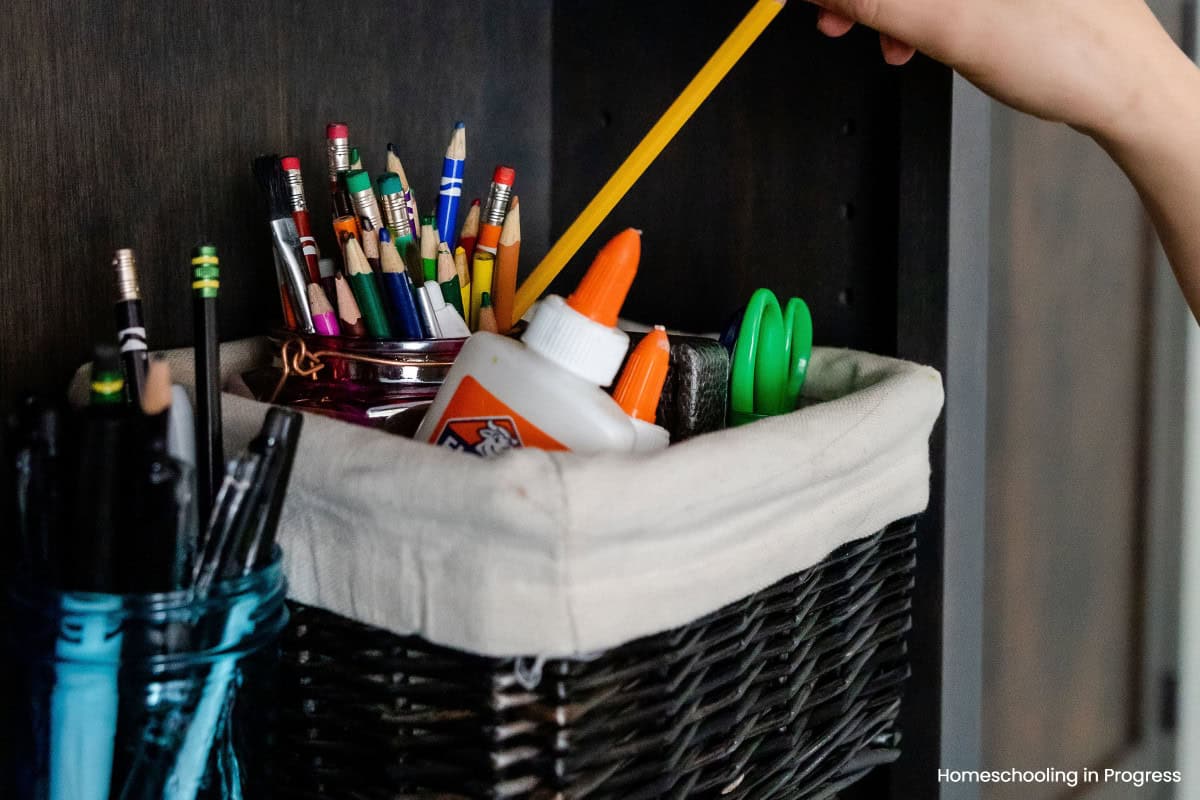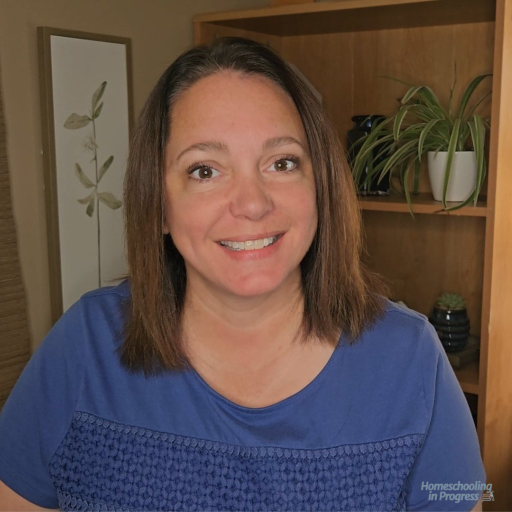What to Do in July to Start Homeschooling Strong (Without Planning Every Detail Yet)
Homeschool planning in July doesn’t have to overwhelm you. Try these 5 gentle steps to start your school year strong—perfect for moms teaching multiple ages.

This post may contain affiliate links, which means I may receive a commission, at no extra cost to you, if you make a purchase through a link. Please see my full disclosure for further information.
July can feel like the quiet before the homeschool storm. You’re still soaking up the slower days of summer, but there’s a little voice whispering, “Shouldn’t I be planning?” Maybe you’ve glanced at a curriculum catalog or two or scribbled a sticky note for your planner—only to set it aside, unsure about where to begin or what to focus on first.
The good news? You don't have to plan your entire homeschool year right now.
In fact, July is a perfect time to take a gentler approach--one that lets you ease your mind, heart, and home into the next homeschool year without the need for rigid schedules and long to-do lists hanging over you. There's a lot you can do right now that will ensure smoother planning come August and a more peaceful homeschool year.
In this post, I will share simple, intentional ways to start the homeschool year strong--without having every subject or supply figured out yet.

5 Gentle Steps to Take in July to Start Homeschooling Strong
1. Look Back to Move Forward
Reflect before you reset
Before you start thinking about schedules or supplies, take a moment to pause and reflect. July is a wonderful time to look back on your last homeschool year—not with pressure or perfectionism, but with gentle curiosity. What worked? What didn’t? What felt like life-giving learning, and what left everyone drained?
You don’t need a detailed report. Just grab a notebook or open a notes app and jot down a few thoughts. These gentle reflections will help guide your decisions as you move into planning mode later on.
Now that that last homeschool year is behind you, you can more honestly answer the following simple questions:
What were our favorite parts of last year’s homeschool?
What didn’t work—and why?
When did I feel most connected to my kids?
What activities or routines brought peace to our days?
What made us feel rushed, stressed, or scattered?
What do I want more of this year? What do I want less of?
This kind of reflection doesn’t just help you plan better—it helps you homeschool from a place of intention and peace. And that’s a beautiful place to begin.

2. Clear the Clutter, Clear Your Mind
Declutter your homeschool space
Before the new books arrive and the fresh plans begin, take a little time to clear the physical space where your learning happens. You don’t need a Pinterest-worthy overhaul—just a few intentional steps to make your homeschool space feel calm, inviting, and ready for a new school year.
Start small with one shelf, one basket, or one drawer. As you go, ask yourself:
Are there supplies we never used?
Are any books or materials outdated or outgrown?
What can be donated, recycled, or packed away?
You might also look for ways to rearrange your space to make it feel fresh and functional—without buying anything new. Sometimes a small shift, like moving a table closer to a window or creating a quiet reading corner, can make a big difference.
I just rearranged some of our homeschool space this summer. My youngest is the only one who still does all of his work in our homeschool room. My two high schoolers prefer to complete their work up in their rooms now. Since we didn't need the large table in the middle of the room anymore, I pushed it against a wall. That gave more space in the middle of the room to move the couch up against my desk. I'm planning to add an accent chair and small coffee table so that we can have a cozier area for our science and history lessons, which are mostly read alouds.
And don’t forget to involve your kids! Let them help sharpen pencils, check markers, or sort books by topic. It gives them ownership over the space and signals that a new season of learning is on the way. My youngest helped me decide how to rearrange our room, which has him so excited to start the new school year.
Decluttering isn’t just about tidiness—it’s about creating room for what matters most.

3. Build Rhythms Before You Build a Schedule
Focus on habits, not subjects
When we think about preparing for a new homeschool year, it’s easy to jump right into detailed schedules and subject lists. But before you get caught up in the “what” and “when,” it helps to gently ease your family back into daily rhythms that support learning—without locking yourself into a rigid routine.
Think of rhythms as the gentle anchors in your day: the repeated moments that bring calm, connection, and a sense of flow. These habits can be as simple as:
Starting the day with prayer or morning time
Reading aloud after breakfast
Having a quiet rest time each afternoon
Tidying up together before dinner
You don’t need to schedule these to the minute. Just begin to reintroduce them one at a time—slowly, naturally—so that when the full homeschool days begin, your children already feel the comfort of a familiar flow.
Focusing on rhythms now will give your school year a stronger foundation than any color-coded planner ever could.

4. Make Gentle Notes, Not Final Plans
Brain dump without boxing yourself in
It’s tempting to try and plan everything in one sitting—subjects, schedules, supplies, goals. But July doesn’t need to be about perfect plans. Instead, let it be a time for light brainstorming and capturing ideas as they come to you.
Rather than building out a full curriculum map, try creating a simple “brain dump” list. Keep a notebook or a section in your planner where you jot down:
Books you want to read as a family
Topics your kids are curious about
Field trip or nature walk ideas
Themes for morning time or unit studies
Seasonal traditions or feast days to celebrate
This kind of gentle note-taking gives you a head start on planning without forcing yourself into decisions you’re not ready to make. When August rolls around, you’ll already have a foundation of ideas to draw from—and that makes planning feel a lot easier.
My youngest has been so curious about a variety of science topics. I decided to start jotting down his questions and interests in a notebook. This is the basis for his science curriculum this year. Now when it comes time to sit down and plan out the year, I'll use that list as my foundation to build more detailed lessons with books and activities.
Think of this as planting seeds. You’re not creating the whole garden yet—you’re just gathering what you might want to grow.

5. Connect with Your Kids
Learning begins with relationship
Before the books open and the plans are written, one of the most meaningful ways to prepare for a new homeschool year is simply spending time with your children. Homeschooling is built on relationship—and strong relationships create a peaceful foundation for learning.
Use this more relaxed season to reconnect without an end goal. Go for walks. Bake together. Watch their favorite movie. Invite conversation during car rides or quiet moments at bedtime.
You can even gently ask:
“What are you excited to learn this year?”
“Is there anything you’d like to do differently than last year?”
“What was your favorite memory from homeschooling last year?”
These questions open the door to shared insight and trust. You might be surprised by what they say—and it might shape your plans in unexpected, beautiful ways.
When your children feel heard, loved, and known, they’re more ready to learn. And when you feel connected to them, everything else about homeschooling gets just a little bit easier.

A Gentle First Step Toward a Meaningful Year
You don’t need to have every subject mapped out or every supply ordered to start the year strong. Sometimes the best way to prepare is to slow down, reflect, and create just enough space for peace and possibility to grow.
Whether you’re decluttering a shelf or reconnecting with your kids, these small steps in July are laying a meaningful foundation for your homeschool year.
And when you're ready to start putting a plan on paper, I’d love to help.
Grab my free Homeschool Planning Guide—a gentle, flexible tool to help you think through what matters most and create a plan that actually fits your family.
You don’t need to plan it all right now. But you can start with peace—and that makes all the difference.


